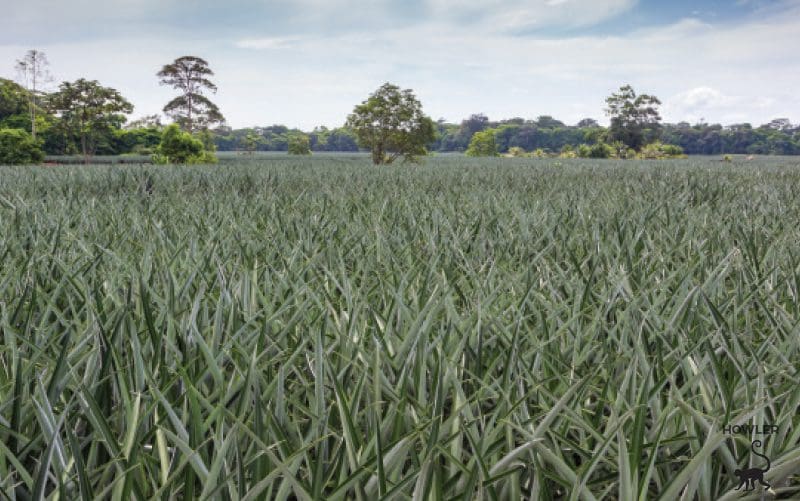
Medicinal Plants of Costa Rica
Medicinal Plants of Costa Rica: Guide to Home-Grown Healing. Who doesn’t savor the sweet scent of lavender? Actually, scorpions detest the fragrance of lavender and are deterred by it, which is one reason this plant is so popular in Costa Rican gardens.
Traditionally, such practical applications for vegetation have been common in most cultures, with medicinal uses in particular experiencing a modern wave of interest. Botanist Ed Bernhardt has spent more than 30 years investigating Costa Rica’s abundance of home-grown healing fauna, where they thrive and how they can treat ailments. His insights were recently published in the guide book “Medicinal Plants of Costa Rica.” Some highlights are as follows.
Throughout this fertile country,
medicinal plants abound.
Fertile soil everywhere
Costa Rica is home to more than 100 different plants that have proven medicinal value. The country’s geographic attributes are unique: volcanically enriched soil is spread throughout several contrasting microclimates, in a series of elevations between two distinct oceans. The result is a cornucopia of growing conditions for plant life.
Although medicinal plants abound throughout this fertile country, they are found predominantly in the tropical climate zones and elevations. Some, however, grow in more restrictive climes.
The dandelion, for example, grows only in elevations above 1,000 meters in the neotropics. What most people consider a noxious weed is actually one of nature’s secret medicines. It has been used to treat gout, rheumatism, kidney, spleen and liver problems and is a mild laxative as well. The dried roots can also be used as a substitute for coffee. The dandelion plant is particularly prodigious in Monteverde and Nosara, where cultivation for marketing purposes has begun.
The health benefits of ginger, chamomile and aloe vera — all prevalent in Costa Rica — have been known and practiced for millennia. But did you know that grated avocado seeds can be used as a topical ointment for many skin infections and rashes? Or that a tea made from dried avocado leaves is used to treat the flu, diarrhea, fever and even high blood pressure? The avocado tree grows predominantly in the northwestern (Guanacaste) area of the country. The Tarrazú area has become the biggest growers of Hass avocados in Costa Rica..
Multi-purpose tree
The pink trumpet tree (roble de sabano), known as the cortez negro in Costa Rica, was considered sacred by Mayan and Incan civilizations. Over the centuries, its medicinal uses have been vast. Of the tree’s many uses, the bark and its tannins are antiseptic and antibacterial. They also appear to have tumor-reducing and anti-cancer properties. These marvels prefer to grow in the flatlands and savannas of the country.
On the Caribbean side, particularly in the southern regions near Cahuita and Puerto Viejo, a plethora of medicinal plants thrive. The gavilana plant (jackass bitters) is brewed as a tea to treat infections, fever and intestinal parasites. Equally abundant on the eastern seaboard is the dormilona or “mimosa.” Brush the leaves of this plant with your finger and they will close in on themselves, which is why they are nicknamed “the sensitive plant.” These same leaves are brewed to produce a tea that serves as a pain reliever and sleep inducer.
The culinary versatility of plants such as basil and garlic has kept them on the kitchen table. But their broad-sweeping healing uses have been largely overlooked if not forgotten in modern times, swept into the category  of “old wives’ tales.” As it turns out, many traditions are worth keeping.
of “old wives’ tales.” As it turns out, many traditions are worth keeping.
Knowing that papayas can lower your blood pressure or that hibiscus plants help alleviate menstrual cramps may not save your life. But knowing where to find them and how to apply their usages can surely help you feel a lot better.
“Medicinal Plants of Costa Rica,” a new guide book by botanist Ed Bernhardt, is a project the author has been working on for more than three decades. The outcome is a comprehensive source of information on more than 90 Costa Rican plants, some that can literally be found in your backyard. Ed Bernhardt’s book provides the genus name for each plant as well as its common names in both English and Spanish. The natural growing zones, tips for propagating and medicinal properties of each plant are detailed, as are the techniques for preparing each plant.
The reference book was recently released by Zona Tropical, a San José-based publishing company. All books in the Zona Tropical catalogue are available at The Bookstore of the Waves in Playa Tamarindo. A store copy of “Medicinal Plants of Costa Rica” is available for customers to browse its contents..

